

Classic Buses Profiles
Special vintage gallery (by Dick Gilbert)
Hall Lewis / Park Royal bodywork 1927-30
Last updated 13 April 2021
SOME LINKS WITHIN THIS WEBSITE: Home Email Links THE COMPLETE WEBSITE MENU Events Diary Halfcab list Small-Ads Classic Irish Buses Classic Manx Buses
Once in a blue moon a very exceptional set of photographs comes to light, and the Classic Buses Website has pleasure in presenting this special vintage gallery to display just such a collection. As far as is known, these images have never been published as a series before.
They were kindly sent by Jim Type, who says: I was given these glass plate photos in 1979 (when I was on the buses in Andover) by a regular customer, an old lady now sadly deceased. Her husband had been a professional photographer in the late 1920s early 30s for Hall Lewis / Park Royal at Abbey Road in North London.
So some (but perhaps not all) of these pictures were presumably taken at the works at Park Royal. Hall Lewis established a body-building facility at Park Royal in 1924, but the firm was liquidated in early 1930, and Park Royal Coachworks was formed from the assets in April of that year. These images seem to have been taken between 1927 and 1930.
Once again I have called on the expertise of John Bennett for his specialist knowledge in attempting to identify the vehicles concerned. So my thanks to John Bennett for much of the content of the captions, and of course especially to Jim Type for sending me the images. I hope you enjoy the result.
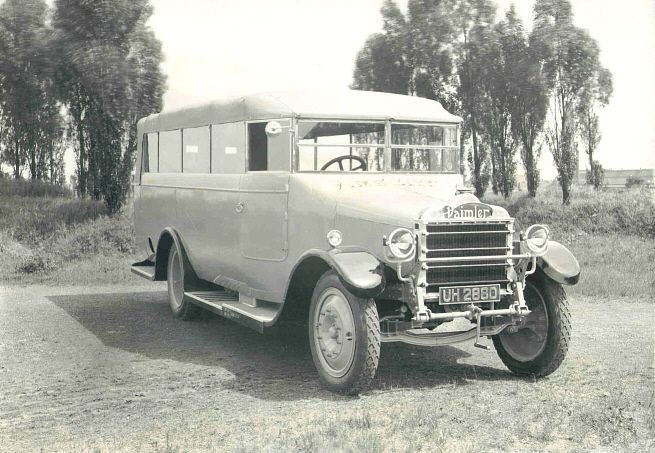
To open the series we have a purposeful-looking Daimler charabanc. UH 2880 is a Daimler CK, new in May 1927 as one of a pair (the other was UH 2879) delivered to C. J. Vincent of Cardiff. In the original photo it's possible to see the word VINCENT written across the bonnet, in front of the windscreen. John Bennett points out that it should strictly be called a sun saloon, rather than a charabanc.
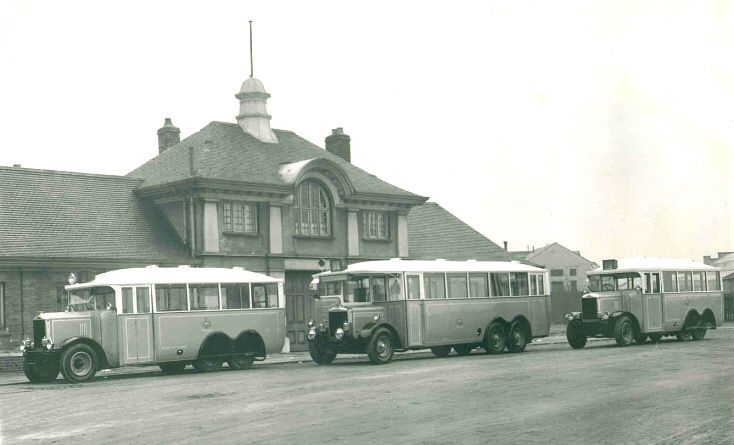
Three Salford City Tramways Karriers, at an unknown location, which perhaps a reader may recognise. The smaller ones on the right and left are Karrier CL6/1 models, registered BA 6264 and BA 6262 (chassis numbers 38001 and 38002 respectively) with Hall Lewis B20F bodies, although we do not know which one is which. The larger vehicle in the centre is one of two Karrier WL6/1 buses purchased by Salford, either BA 6261 or BA 6263 (chassis numbers 42009 or 42010) with Hall Lewis B32D bodies. All these Karriers were delivered in 1927 and, since there are no registration plates, destination details or route numbers visible in the picture, it's a fair bet that it was taken at that time, when the buses were brand new.
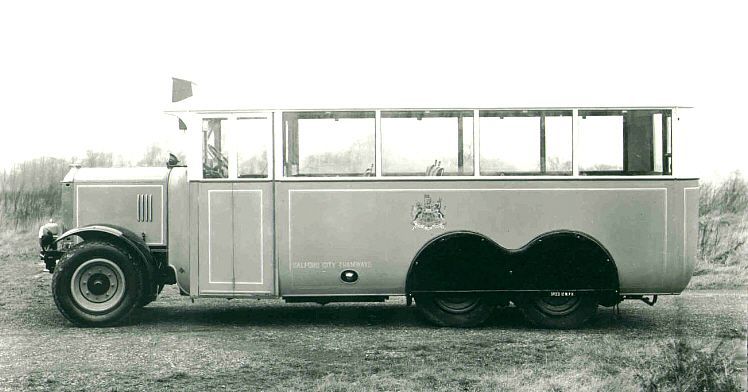
The picture above shows one of the smaller Karrier CL6/1 buses in more detail. Such a powerful engine and so many wheels for just 20 passengers! Written in small letters on the rear wheel arch is "Speed 12 m.p.h.", which would probably be a it unpopular in some places today, or perhaps the best speed you could hope to achieve in traffic in other places. There is no visible clue to the exact identity of the vehicle.
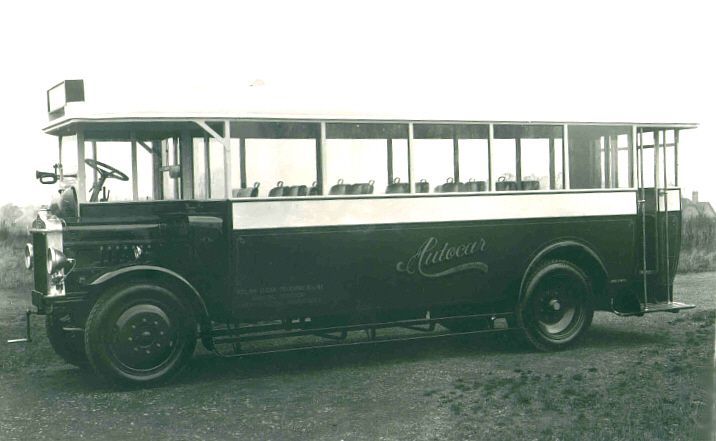
This bus, for delivery to Autocar Services of Tunbridge Wells around the end of 1926 or early 1927, doesn't displays any registration or fleet number so it can't be identified for certain, but John Bennett is satisfied that it's an AEC 413, and one of four possibilities - KM 8930, 8931, 9107 or 9108.
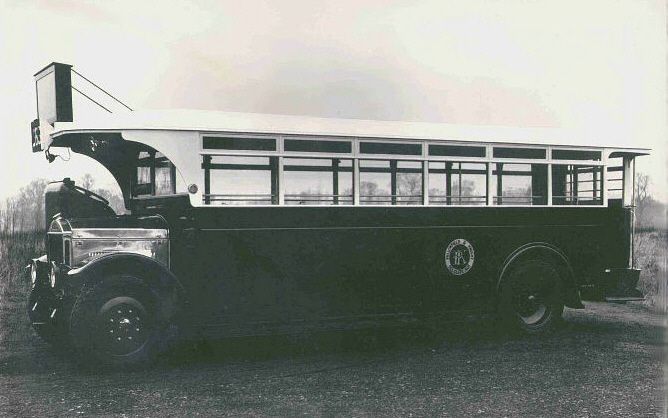
This is a Maudslay ML3, either YR 8860 or 8861 (chassis numbers 3999 or 4000), new in October 1926. The badge on the side says Fallowfield and Knight. In 1947 this company merged with W. and J. Britten's Superb Coaches to form the well-known Hackney operator, Fallowfield and Britten. That firm was itself taken over by the George Ewer Group in 1952, but continued to operate under its own name for many years.
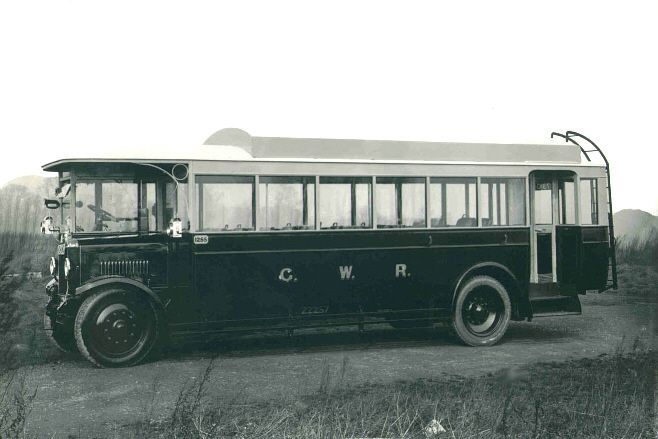
This Great Western Railway bus no. 1255 is a Guy FBB (chassis number 22257) with a Hall Lewis B32R body, new in February 1927 as YE 7310. The fleet number 1255 is visible on a light-coloured plate below the front passenger window. Curiously the chassis number 22257 is displayed in quite large figures at the bottom of the body panel below the G and W on the side. There is no registration plate to be seen on the front, but 7310 is visible in reverse at the top of the rear offside window, confirming the identity of the vehicle. The image has clearly been touched up, giving a strange mountainous appearance to the background.
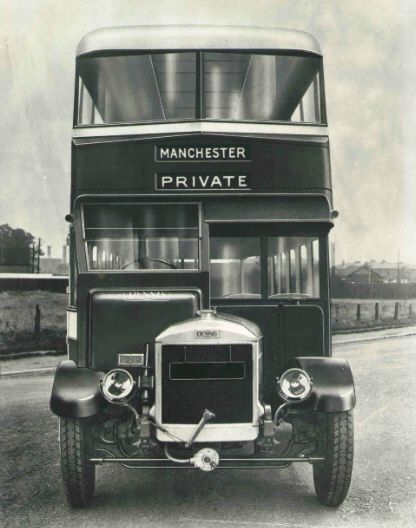
Despite the fact that some publicity chappie has decided to airbrush and modify this image so heavily, John Bennett was able to confirm that it is Dennis H demonstrator PK 3347 (chassis number 90015) with Hall Lewis H28/20R body. New in 1928, it went first to Manchester and later to Cardiff Corporation.
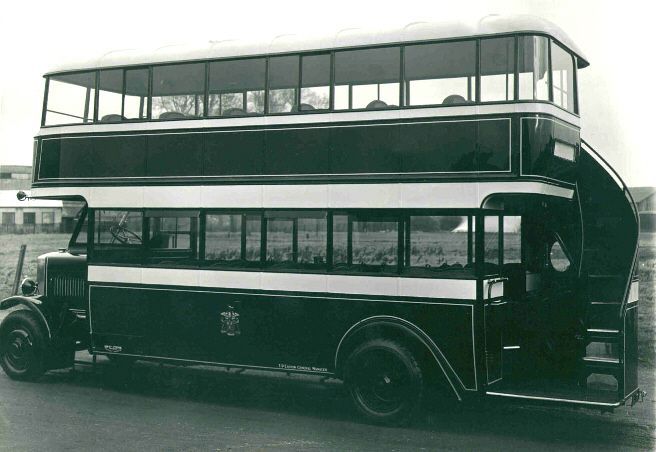
This is a 1930 Guy FC of Newcastle Corporation, one of VK 1233, 1234, 1286 or 1287. The H28/24R body is probably (technically) by Park Royal, rather than Hall Lewis.
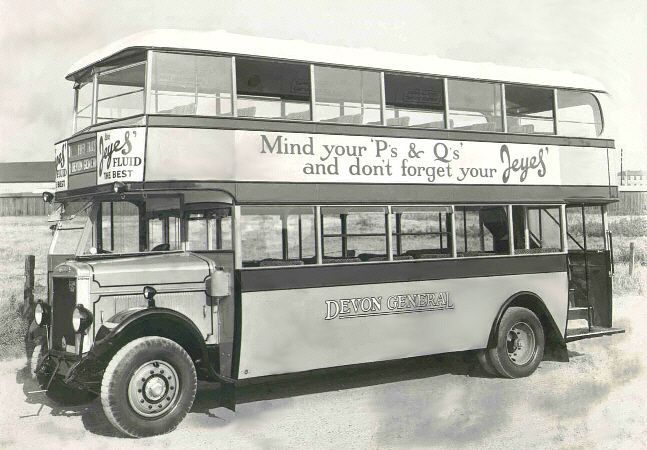
John Bennett found an article by Chris Taylor and Mike Sutcliffe in Leyland Torque magazine, which explains a lot about this vehicle. It is one of four Devon General Leyland Titan TD1 buses (DV 225 / 2149 / 2304 / 2356, chassis numbers 70536-70539, fleet numbers 138-141), originally delivered in 1929 with Hall Lewis normal height (highbridge) bodies, but they were found to be very heavy. So they were all rebodied with Hall Lewis lowbridge bodies with a sunken upper deck gangway and 3-abreast seating, reducing the capacity from 52 to 48, and lowering the weight to under 9 tons, fully laden. The picture above (which was in a pretty poor state, and needed some enhancement) shows one of these buses when newly fitted with the lowbridge body. In this configuration the four remained in service until 1936, while the original highbridge bodies were sold to Cardiff Corporation and fitted to four unique forward-control Thornycroft LC buses.
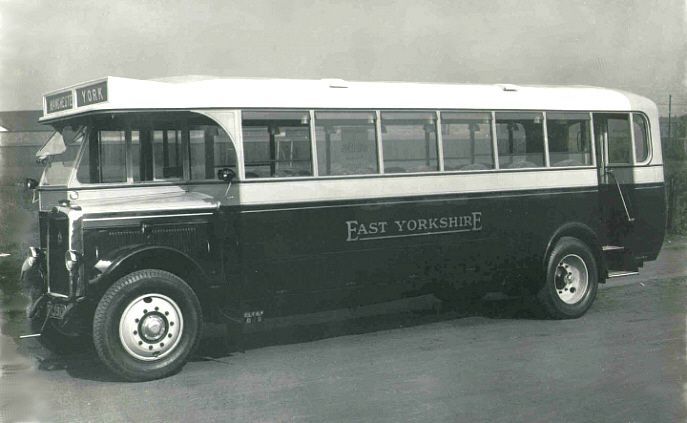
This is a 1929 East Yorkshire Leyland Tiger TS2 with a somewhat spacious 25-seat coach body. It could be any one of KH 7917-7919 (chassis numbers 60367-9). Two of those three (excluding KH 7918) were rebodied as 30-seat buses by Charles Roe of Leeds in 1936.
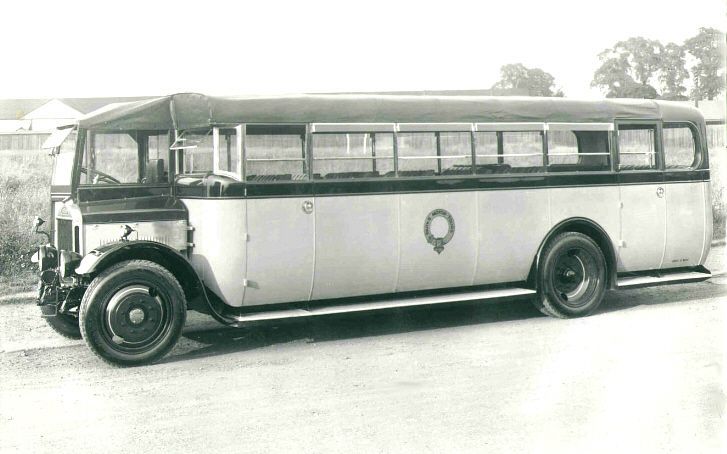
This is a Maudslay ML3, but we can't identify it further. The name on the side reads Darks (or Parks or something similar) Motor Tours. Any further information would be most welcome.
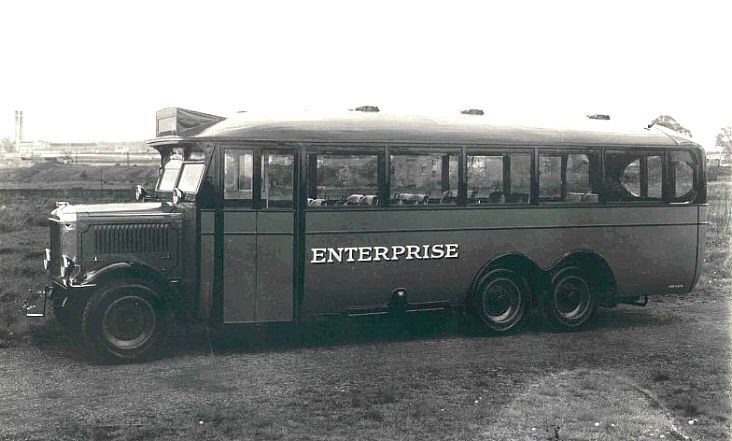
Having established the easy bit - that this is a six-wheel Karrier belonging to a company named Enterprise, John Bennett was then able to say that it belonged to Bangor Motor Services of Northern Ireland, trading as Enterprise, and was new in 1927, although the registration was not known. Enterprise later became part of the Belfast Omnibus Co. At this point, I involved Shane Conway from the Classic Irish Buses Website, who kindly unearthed the following:
Apparently a batch of vehicles latterly owned by the Northern Counties Committee (none of which passed to the NIRTB) included several which had been with the Belfast Omnibus Co., and among those were four IJ (Co. Down) registered Karriers. It doesn't state where the B. O. C. got them from, but being IJs probably means they didn't buy them new. The four were IJ 6009 (new 1925, 32 seats), IJ 7069 (new 1926, 30 seats), IJ 7237 (new 1926, 30 seats) and IJ 8139 (new 1927, 30 seats).
So, if John Bennett is correct that the vehicle was new in 1927, then the last one on Shane's list (IJ 8139) would seem a very likely contender.
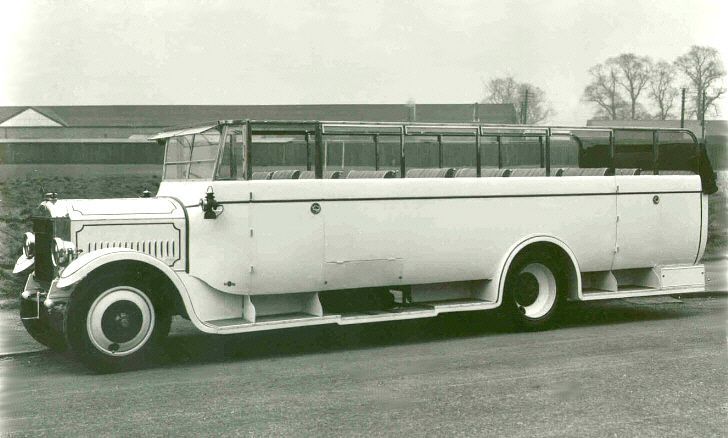
This smart Dennis F charabanc has not been traced, and there aren't many clues. John Bennett says that the white (or cream) livery suggests a seaside operator, and speculates that it might perhaps be bound for the Isle of Wight.
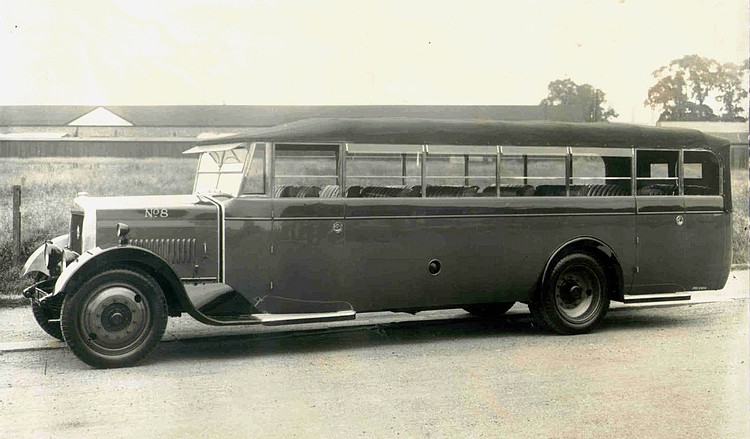
All we can say about this vehicle is that it is a Leyland Lioness, and has no. 8 on the bonnet. Let us know if you can add more.
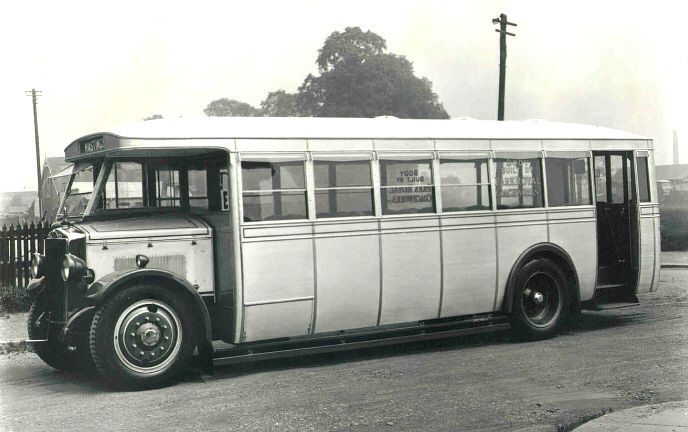
VC 6112 is a Maudslay ML7A (chassis number 4799) with Hall Lewis 32-seat body, new in May 1930 to Maudslay as a demonstrator, and then to Bircher, Ibstock, Leicestershire in February 1932. The ML7 could be a saloon, coach or double-decker chassis and had a big engine - no doubt both powerful and thirsty! It is recorded as being with a Hall Lewis body, but was probably under construction at the time Park Royal was formed, hence the inscription (body built by Park Royal Coachworks) in the windows.
For more special vintage galleries, click here for Wray bodywork 1928- 1929 (two pages) and click here for Silver Queen of Clacton 1926-1933.
For many other buses, have a look at all the other profiles on the Classic Buses menu page.
SOME LINKS WITHIN THIS WEBSITE: Home Email Links THE COMPLETE WEBSITE MENU Events Diary Halfcab list Small-Ads Classic Irish Buses Classic Manx Buses